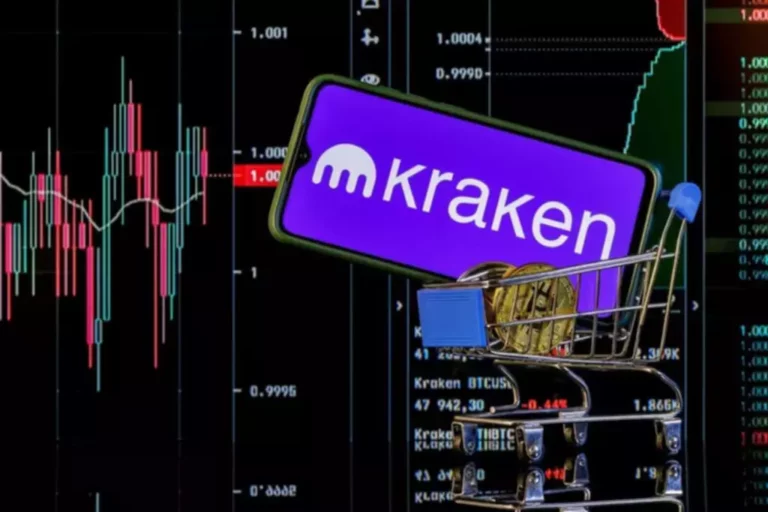Blockchain Bridges: Constructing Networks Of Cryptonetworks 1kxnetwork
Custodial bridges have a central authority safeguarding funds, while trustless bridges operate through a collection of good contracts. Blockchain bridges, also recognized as cross-chain bridges, serve as instruments that facilitate the seamless switch of belongings and information between varied blockchain networks. These bridges connect completely different blockchain networks or functions, just like how bodily bridges join separate areas. They allow interoperability between layer one and layer two throughout a quantity of blockchain networks. Blockchain bridges are a mechanism that enables the switch of digital property or data between two or more separate blockchain networks.

According to the official blog submit on bridges from Ethereum, this allows dApps (decentralized applications) to entry the advantages of varied blockchains, enhancing their capabilities. It additionally permits the cross-chain transfer of assets and information (as the protocols presently provide more design space for innovation). Users can even make the most of some nice advantages of different chains and entry new platforms. In addition, programmers and builders from numerous blockchain ecosystems can collaborate to create newer user-facing platform options.
Draggan: Unlocking Photoshop Magic With Point And Drag Controls
But, normally, we see several varieties of bridges due to what they connect and their major use-cases. There is normally a bunch of validators that monitor a “mailbox” handle on the source chain and, upon consensus, perform an motion on the destination chain. An asset transfer is often done by locking up the asset in the mailbox and minting the equal quantity of that asset on the destination chain. These are often bonded validators with a separate token as a safety mannequin.
- By bridging your ETH from the Mainnet to an Ethereum L2 rollup, you can get pleasure from decrease transaction fees.
- If a bridge’s developer copy pastes code from another bridge, they could copy the same vulnerabilities.
- After the crypto is sent to the address through the time window, Binance Bridge will ship you an equivalent amount of wrapped tokens on the other blockchain.
- These bridges connect completely different blockchain networks or functions, just like how bodily bridges connect separate places.
- The bridge will create the same amount of $ETH on the Ethereum blockchain whereas locking the $BTC in a wise contract.
This is especially true for decentralized bridges, which rely on self-executing packages to power their core functionalities, such because the minting and burning of wrapped tokens. Badly written or poorly optimized sensible contracts might create potential exploits or different vulnerabilities that might be targeted by bad actors. One such example is the Wormhole hack in February, by which a hacker was able to steal a hundred and twenty,000 wETH by exploiting smart contract vulnerabilities. Blockchain bridges enable cross-chain transactions by creating a secure and trustless connection between two or more blockchain networks. Attackers have exploited the vulnerabilities of some blockchain bridges’ sensible contracts. Massive amounts of crypto have been misappropriated by malicious actors from cross-chain bridges.
Developers also can combine the 2 fashions to benefit from the advantages of both. In a hybrid design, a central entity shall be current and can get entangled in specific operations. The transfer of funds, however, will keep decentralised and shall be managed by smart contracts. Another danger that stems from the centralization of trusted bridges is expounded to collusion formations.
Blockchain bridge has a major perform to make interoperability possible. Interoperability defines how properly digital and knowledge property saved on a blockchain community can communicate. The new-gen Internet requires main interoperability to operate correctly as an entire unit. Thus, blockchain bridges are a necessity to permit the switch of information, value and knowledge effectively among completely different protocols.
Blockchain Development With Ai [updated]
It’s important to totally analysis and vet any blockchain bridge earlier than transferring property or interacting with other blockchain networks. Look for bridges which have undergone third-party audits, have a proven security and reliability observe document, and are transparent about their governance and safety practices. Additionally, it is always a good idea to keep delicate data safe and cautious when transferring assets across completely different blockchain networks. For instance, if the bridge is not adequately secured or audited, it might be weak to hacks or exploits. Some blockchain bridges could require customers to belief a centralized authority or intermediary.
Innovators may develop new & even more secure bridging methods in the future. The high four advantages of blockchain bridges include communication between blockchains, flexibility, effectivity, and scalability. Blockchain bridges clear up this downside as they allow seamless interaction between totally different networks. In this article, we clarify every little thing you have to find out about bridges in blockchain technology. Trusted bridges are a cross-chain protocol that depends on a gaggle of pre-selected and trusted entities to facilitate cross-chain interoperability. These bridges operate on the premise that the validators are reputable and can be relied upon to deal with the transfer of property.
Every blockchain is completely different and has its advantages and downsides. A DApp or protocol can reap the advantages of each chain’s particular benefits by porting a token cross-chain. Having a token solely what is a blockchain bridge on a particular chain limits the token to that chain’s specific functionality. 5 years of expertise in crypto analysis of writing practical blockchain and crypto evaluation on Medium.
Blockchain Bridges: Definition, Types, Functions And Risks – Blockchain Magazine
Blockchain Bridges: Definition, Types, Functions And Risks.
Posted: Wed, 09 Aug 2023 07:00:00 GMT [source]
There are the pioneer protocols like the Bitcoin and Ethereum networks, followed by a myriad of other layer 1 and layer 2 blockchains. For instance, you want to switch your bitcoin (BTC) to the Ethereum network. However, this may incur transaction fees and expose you to price volatility. As such, it might introduce vulnerabilities that would not be present on either community. Connecting blockchains might probably allow malicious actors to exploit the bridge and entry assets or data stored on either chain.
On prime of that, with the assistance of bridges, users can easily switch their assets from an costly network like Ethereum to a low-fee platform. Once a user sends crypto or belongings from one network to another through a bridge, the assets usually are not actually transferred. Rather, they https://www.xcritical.in/ are locked on the community by way of smart contracts or different mechanisms. An equivalent amount of wrapped tokens are produced on the blockchain to which the belongings are “sent” . Once the consumer decides to say their assets, the model new tokens are destroyed while the unique ones are unlocked.
Blockchain bridges are necessary as a result of they permit for interoperability between totally different blockchain networks. This signifies that customers can entry a wider range of decentralized purposes and providers and usually are not restricted to a single blockchain ecosystem. It is important to acknowledge their need to understand how blockchain bridges work. Blockchain networks exist as separate communities with their economies, limiting their interactions. However, as blockchain initiatives and decentralized applications (dApps) grow, the demand for asset interoperability across networks will increase.
Falconx To Introduce Chatbot Satoshi, Powered By Openai, To Provide Crypto Funding Ideas
Web3 has developed into an ecosystem of L1 blockchains and L2 scaling options, each designed with unique capabilities and trade-offs. As the number of blockchain protocols increases, so does the demand to maneuver property across chains(opens in a new tab). For larger throughput on the expense of decentralization, Avalanche and Solana L1s are constructed in one other way. Every blockchain differs by way of its rules and consensus mechanisms and develops in a closed surroundings. As a end result, there isn’t any natural interplay and free switch of tokens between blockchains. The exchange of knowledge and tokens between blockchains is made attainable by bridges that connect them.
These kinds of blockchain bridges supply completely different options to allow cross-chain transactions, offering users with greater flexibility and increasing the probabilities of blockchain expertise. Another primary problem that blockchain bridges may help overcome is scalability. With blockchain becoming increasingly in style, completely different networks might want to support greater transaction volumes and supply faster processing. With their ability to facilitate cross-chain transfers, bridges can be utilized for the creation of scalability options where the transaction load is shared between interconnected chains.
Many bridging solutions undertake fashions between these two extremes with various levels of trustlessness. Let’s say you have ETH on Ethereum Mainnet but need cheaper transaction fees to discover completely different dapps. By bridging your ETH from the Mainnet to an Ethereum L2 rollup, you presumably can take pleasure in decrease transaction fees. To improve our community’s learning, we conduct frequent webinars, coaching periods, seminars, and events and offer certification packages.
Trusted bridges are the extra centralised choices and need a central entity to operate and facilitate the switch of information and funds between the two blockchain methods. Just like in the actual world the place bridges exist to connect one bodily location to another, blockchain systems use bridges to connect to one another. With bridges, they may have the power to switch property and information between each other. Trusted bridges rely on a governing entity or authority for controlling operations. Under this type of bridge, members are obliged to cede control of their assets to a governing body.
Trustless bridges replace the central entity in trusted bridges with laptop code and sensible contracts. As a result, trustless bridges are more decentralised and could be safer, on situation that the underlying code of the smart contract is drafted properly and audited vigorously. When it comes to bridge improvement, the importance of sensible contracts can’t be understated.
Crypto bridges sometimes make money by charging fees for the use of their companies. For instance, a blockchain bridge might cost a fee for transferring digital belongings between completely different blockchain networks. Additionally, some crypto bridges may earn revenue from different sources, such as staking or providing liquidity to decentralized exchanges. Bridging crypto can be secure, but it also comes with some dangers and safety issues. However, if correct security measures are applied and followed, the risks of using a blockchain bridge could be mitigated. The two primary types of blockchain bridges are custodial and trustless.
Blockchain bridges work by making a connection between completely different blockchain networks. This connection can be achieved by way of numerous strategies, such as sensible contracts, cryptographic algorithms, or specialized protocols. Once the bridge is established, customers can switch property between blockchains. Blockchain bridges work equally to real bridges in the physical world. However, as an alternative of connecting physical locations, blockchain bridges connect two different blockchain networks in crypto. This connection is essential as a result of, without a bridge, blockchain networks would stay siloed environments that cannot talk with one another.

They permit fluid switching between blockchain networks, benefiting traders, developers, and customers. Blockchain bridges present alternatives for user growth, asset manufacturing, transfer, and scalability. They also lower transaction charges and improve velocity, especially with layer two solutions. Blockchain bridges are important for overcoming the obstacles between blockchain networks and ecosystems. They allow customers to transfer belongings seamlessly and work together with purposes running on varied networks. As the decentralized finance (DeFi) sector expands, users would require interoperability between completely different networks to maximise the potential of their belongings.
However, if the mixing is to explore deeper cross-chain strategies like staking, yield farming, etc., the dapp integrates the SDK or API. Unfortunately, many protocols have vulnerabilities that can be used for crypto bridge exploits and hacks. The CEO of IBM, Arvind Krishna, believes that the future of work is about humans and artificial intelligence (AI) working together, not towards one another.
